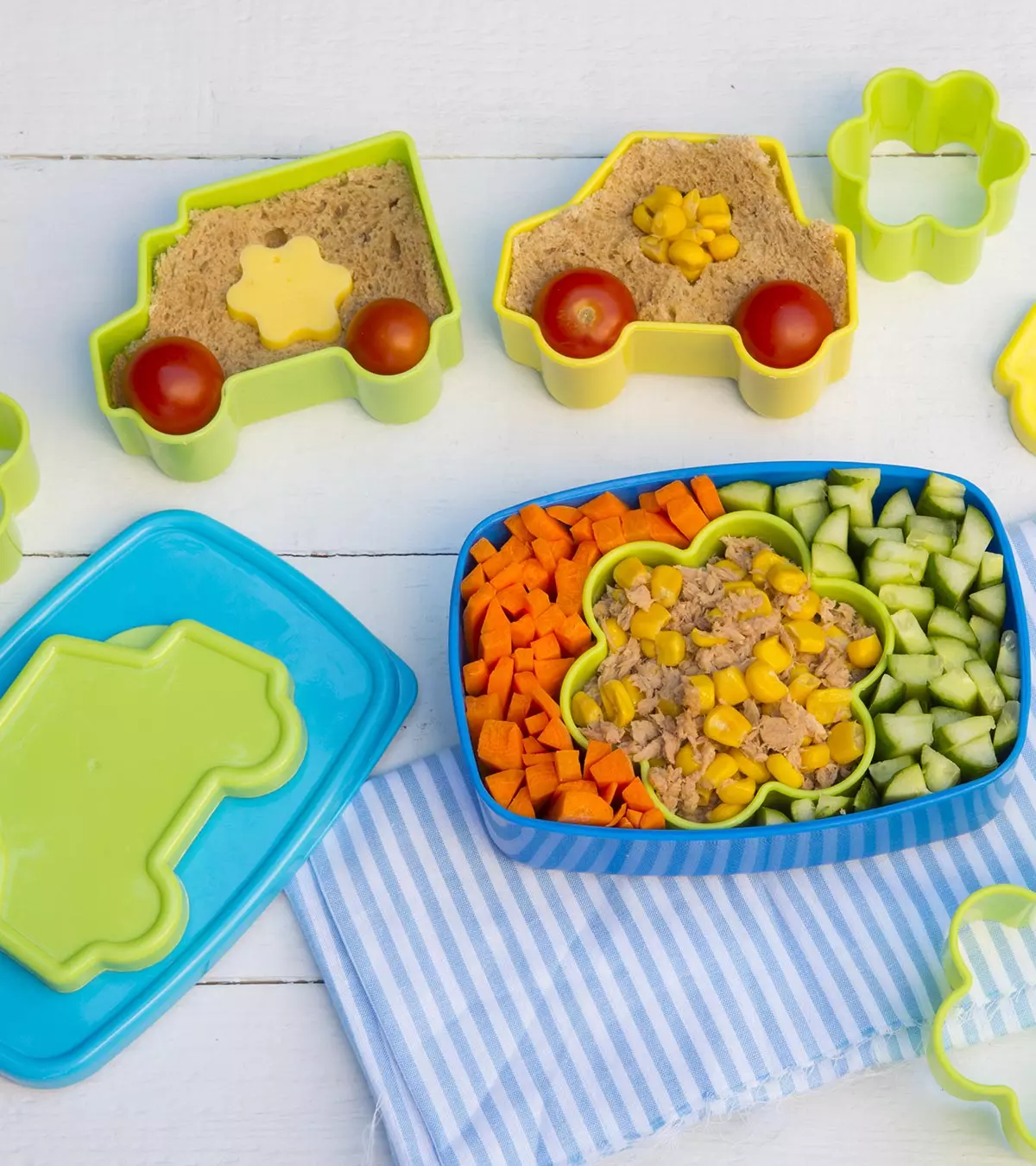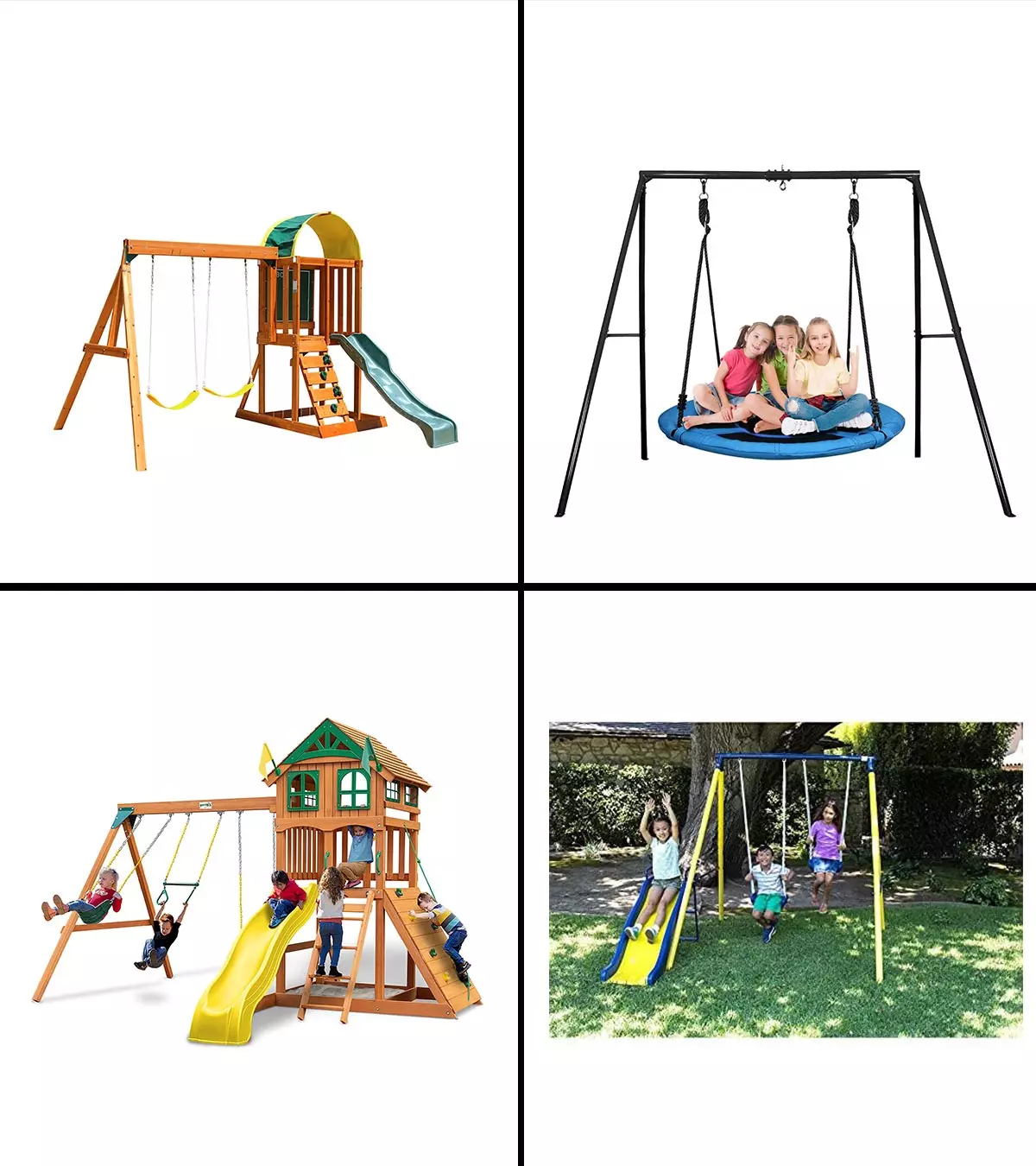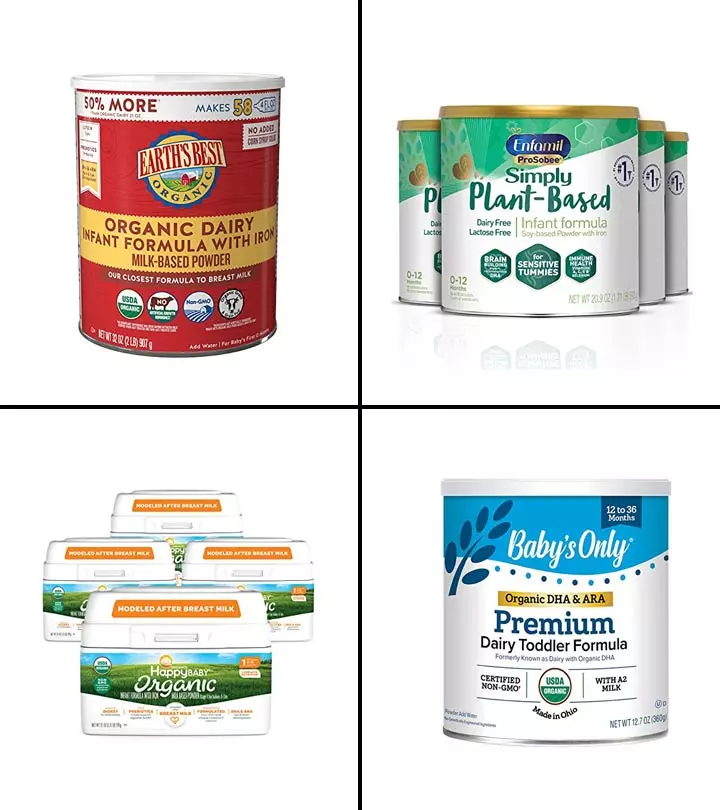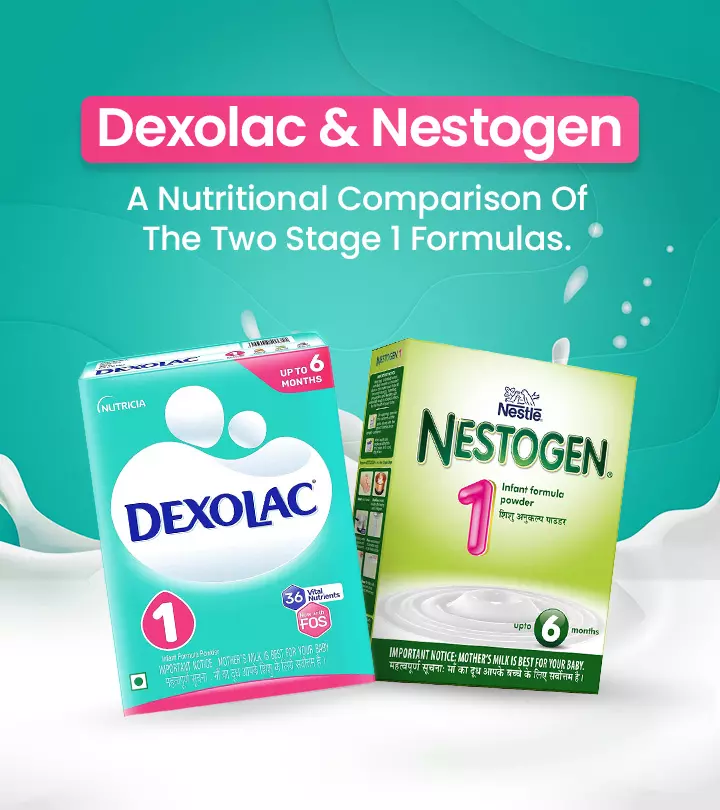
Dexolac Vs. Nestogen: A Nutritional Comparison Of The Two Stage 1 Formulas
Breast milk is the optimal source of food for your little one, and it contains whey and casein proteins, lactose, and fat that are easy to digest (1). However, in the absence of breast milk, formula milk may be a good substitute to provide your baby with essential nutrients. The infant formula you choose must be composed of minerals, vitamins, carbohydrates, and proteins (2).
In this article, we provide a detailed comparison of the Dexolac Infant Formula by Danone and Nestogen 1 by Nestle. Learn about their ingredients and nutritional values and choose the right formula for your baby.
Dexolac Vs. Nestogen: How Are They Different?
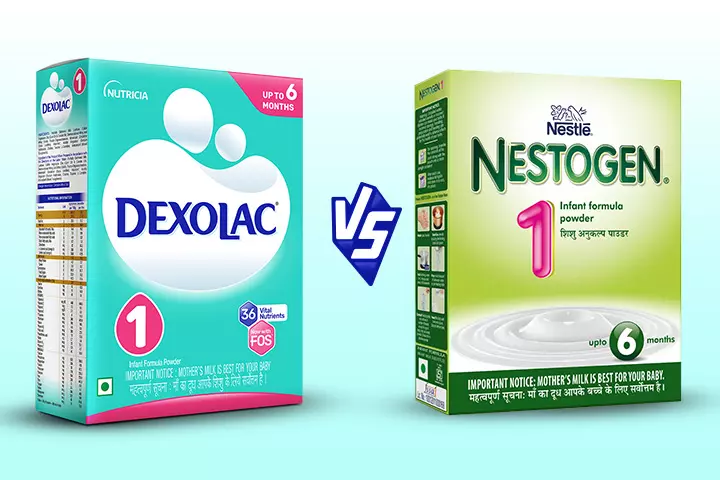
Both Dexolac and Nestogen contain essential nutrients, including vitamins, minerals, carbohydrates, proteins, fat, and minerals, which promote the overall growth and development of your baby. However, they have a few differences in terms of the formulation.
These are some of the differences between the two stage 1 baby formulas.
- Dexolac contains FOS (fructo-oligosaccharides), which improves digestion, softens stools, and aids mineral absorption, while Nestogen contains maltodextrin.
- Dexolac delivers 490kcal per 100g, while Nestogen offers 489kcal per 100g.
All About Dexolac Stage 1 Infant Formula
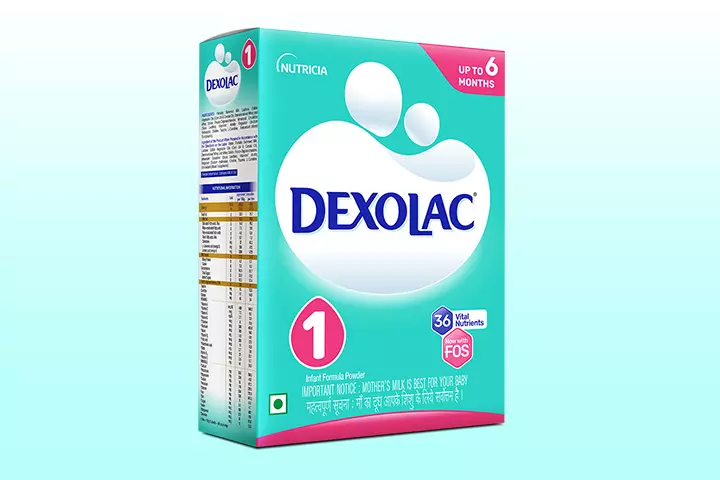
Enriched with 36 essential nutrients and FOS, Dexolac Stage 1 Infant Formula supports your baby’s overall growth and development. FOS reduces the instances of hard or watery stools, helps soften stools, and enhances mineral absorption. This iron-fortified baby formula may also help prevent the risk iron-deficiency. Besides, the scientifically formulated formula contains whey, which is easy to digest, and milk fat with beta palmitate, which helps in better calcium absorption.
Key Ingredients

Partially skimmed milk, lactose, edible vegetable oils (corn and canola oil), demineralized whey and whey solids, fructo oligosaccharides, minerals, emulsifier (soya and lecithin), acidity regulator (sodium hydroxide), vitamins, choline, taurine, L-carnitine, antioxidant (mixed tocopherols)
Price
₹430 (400g)
How Often Should I Use It?
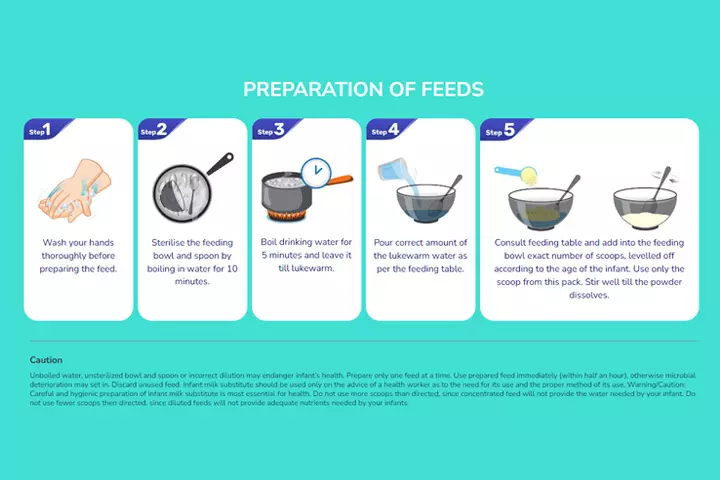
You may feed the Dexolac Stage 1 infant formula to your infant daily and until six months. Refer to the feeding table on the packaging or consult your child’s pediatrician for the recommended daily intake. Also, follow the feed preparation instructions given on the packaging.
Pros
- Contains FOS, which supports digestive health
- Easily digestible
- Suitable for vegetarians
- Supports bone health
- Supports overall growth
- Includes a measuring scoop
Cons
- Not available in resealable packaging
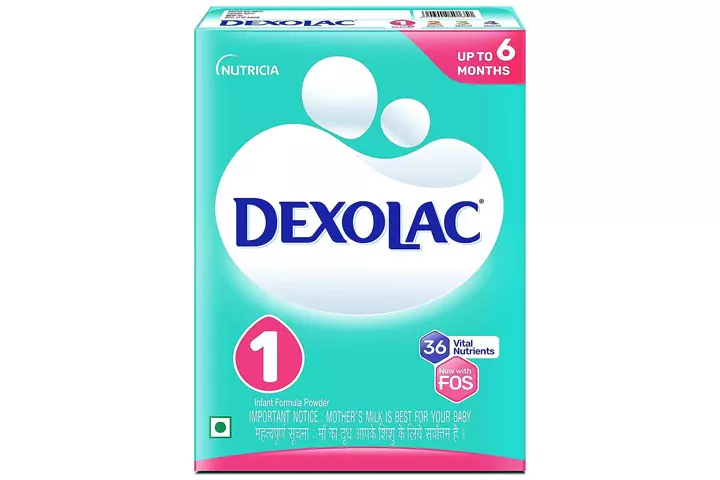
All About Dexolac Stage 1 Infant Formula
Buy On AmazonAll About Nestle Nestogen 1
Loaded with vitamins, minerals, milk fats, and more, Nestogen 1 infant formula by Nestle supports your baby’s overall growth and development. It contains maltodextrin, and this spray-dried formula also strengthens the bones and supports healthy brain growth. Moreover, the formula milk provides a high energy value (489kcal energy per 100g).
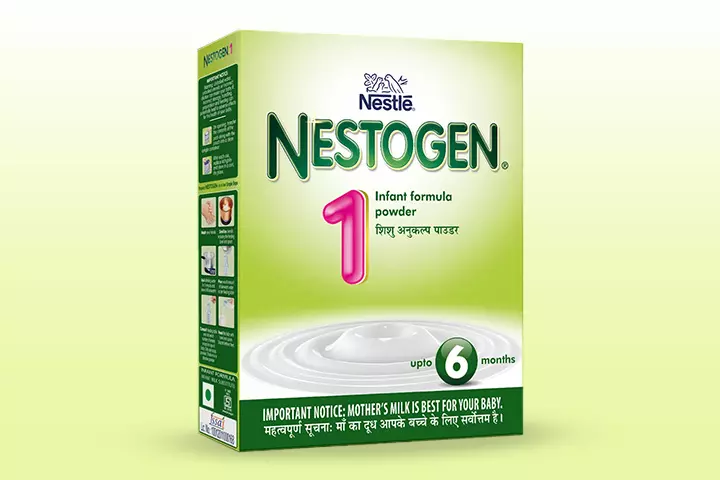
Image: Nestlé
Key Ingredients
Milk solids, maltodextrin, soyabean oil, corn oil, minerals, vitamins, antioxidant, taurine, vitamins, and acidity regulator.
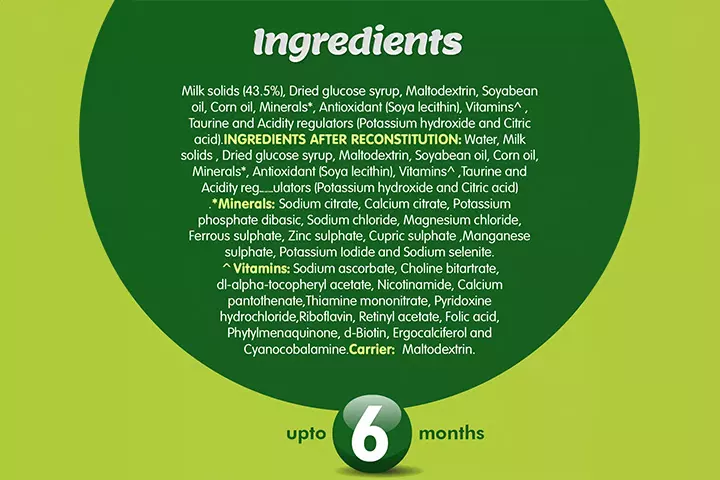
Image: Nestlé
Price
₹290 (400g)
How Often Should I Use It?
The Nestogen 1 infant formula is suitable for babies aged between zero and six months and can be used daily if your little munchkin is on formula feed. Refer to the feeding table on the packaging or consult a pediatrician for the recommended daily intake. Also, follow the instructions given on the packaging for preparing the feed.
Pros
- Blends smoothly with water
- Easily digestible
- Promotes gut health
- Strengthens bones
- Contains essential vitamins, fats, and minerals
- Includes a measuring scoop
Cons
- Does not come in resealable packaging
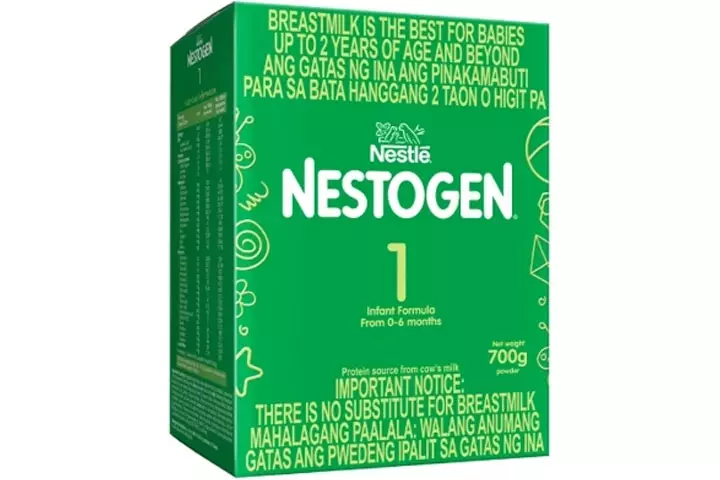
All About Nestle Nestogen 1
Buy On AmazonDexolac Vs. Nestogen – Final Thoughts
Breast milk is the best food for your infant. However, formula milk enriched with essential nutrients can be a good substitute for breast milk if you are unable to breastfeed your baby. Dexolac and Nestogen 1 infant formulas help strengthen the bones, improve digestion, and contain a fine balance of minerals and vitamins for your baby’s overall growth and development. So, consider one of these formula powders after consulting a pediatrician or certified nutritionist.
Winner
The Dexolac Infant Formula and Nestogen 1 are loaded with essential nutrients such as proteins, vitamins, minerals, carbohydrates, and fats for the growth and development of your baby. Dexolac contains FOS, which helps soften stools and promotes mineral absorption. Both Dexolac and Nestogen 1 contain nutrients that support a baby’s growth and development. We recommend you consult a pediatrician before choosing any of these formula milk powders to ensure it meets the specific requirements and needs of your infant.
Frequently Asked Questions
1. How do Dexolac and Nestogen 1 differ from each other?
Dexolac contains FOS, while Nestogen 1 contains maltodextrin. These infant formulas also have a slight difference in energy value.
2. Which factors should I consider when choosing between Dexolac and Nestogen 1?
Both infant formulas are formulated with baby-friendly ingredients and contain essential nutrients for your baby’s growth. They are also easy to digest. However, consult a pediatrician or certified nutritionist to learn about the ingredients in each formula and choose a formula that would be best for your baby.
3. Are there any allergens present in Dexolac and Nestogen?
Nestogen 1 and Dexolac baby milk powder contain milk and soya, which may not be suitable for babies allergic to these ingredients.
4. CanI switch between Dexolac milk powder and Nestogen milk powder?
Most babies easily switch between two formula powders if the formulation and ingredients are similar. However, talk to a doctor before you switch between the two infant formulas.
5. Do Dexolac and Nestogen 1 offer different stages of formulas?
Both brands offer formulas from stage 1 to stage 4. While Dexolac has infant formulas for babies up to two years, Nestogen offers formulas for babies aged zero to three years and beyond.
6. Do Dexolac and Nestogen promote digestion and gut health?
Dexolac is enriched with Fructo Oligosaccharides, which help ease bowel movements, while Nestogen 1 contains maltodextrin, which might aid easy digestion.
7. Is it safe to mix Dexolac and Nestogen?
Mixing the two different infant formula powders may alter the effectiveness of the formula milk. So it is best to use them independently. However, if you plan to mix both Dexolac and Nestogen milk powders, consult a pediatrician for guidance.
8. What potential side effects should I know when using Dexolac or Nestogen?
These infant formulas shouldn’t cause major adverse effects if your baby is not allergic to milk or soya. However, consult a doctor if you notice vomiting, nausea, or diarrhea.
9. Where can I find more information about Dexolac and Nestogen?
References
- Breastfeeding Vs. Formula Feeding
https://kidshealth.org/en/parents/breast-bottle-feeding.html - Camilia R. Martin et al.; (2016); Review of infant feeding: key features of breast milk and infant formula
https://www.ncbi.nlm.nih.gov/pmc/articles/PMC4882692/
Community Experiences
Join the conversation and become a part of our nurturing community! Share your stories, experiences, and insights to connect with fellow parents.
Read full bio of Vibha Navarathna
Read full bio of Pratibha Bagdy
Read full bio of Riya Saini








